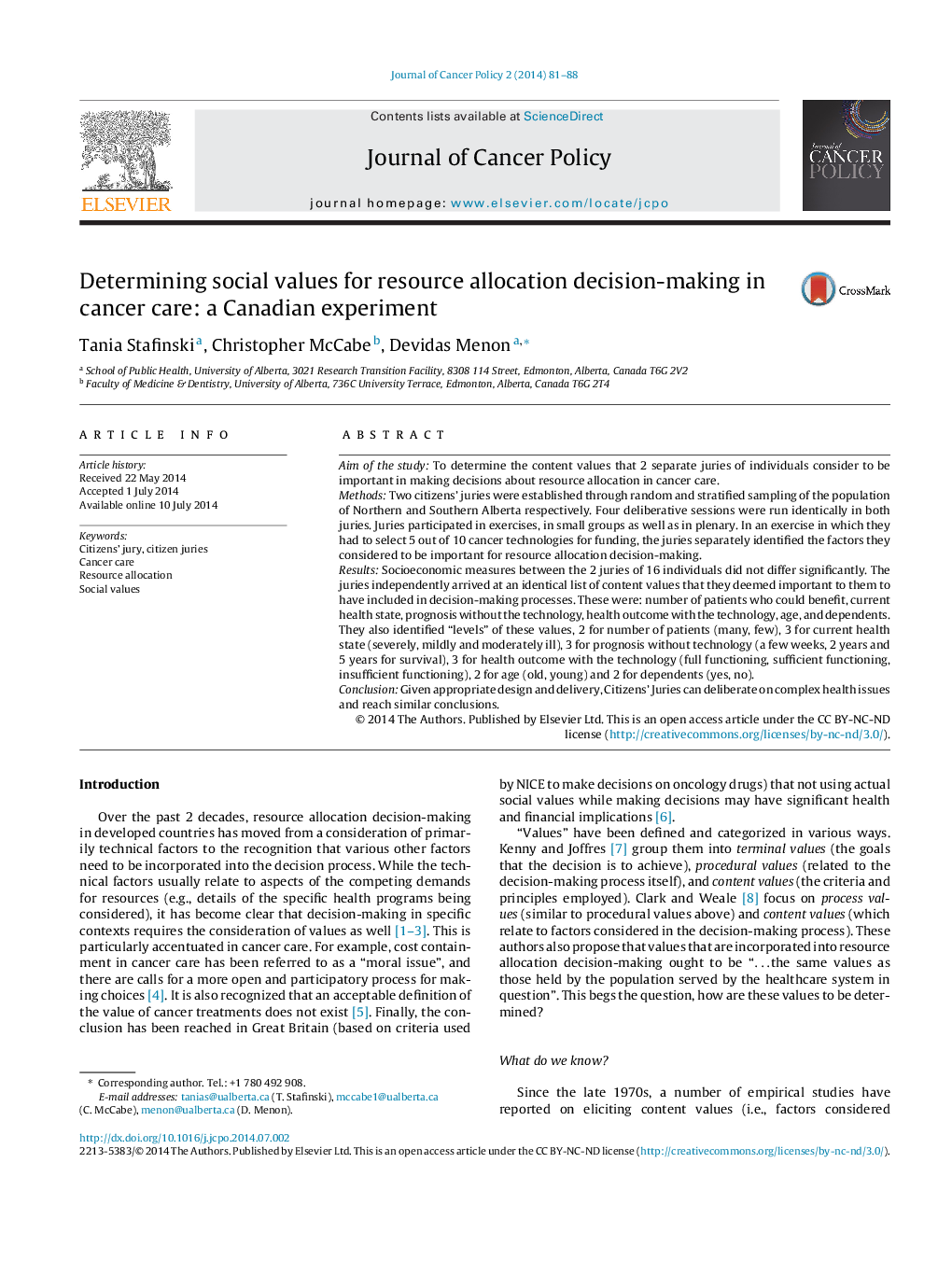| کد مقاله | کد نشریه | سال انتشار | مقاله انگلیسی | نسخه تمام متن |
|---|---|---|---|---|
| 3988748 | 1258589 | 2014 | 8 صفحه PDF | دانلود رایگان |
• We conducted 2 independent Citizens’ Juries to elicit information on social values.
• The juries were conducted in the same way, with the same witnesses and exercises.
• Both juries produced the same list of 6 content values they deemed to be important.
• They also produced levels of these values, which will allow future choice studies.
• This deliberative approach is a validated way of dealing with perspectives on complex health issues.
Aim of the studyTo determine the content values that 2 separate juries of individuals consider to be important in making decisions about resource allocation in cancer care.MethodsTwo citizens’ juries were established through random and stratified sampling of the population of Northern and Southern Alberta respectively. Four deliberative sessions were run identically in both juries. Juries participated in exercises, in small groups as well as in plenary. In an exercise in which they had to select 5 out of 10 cancer technologies for funding, the juries separately identified the factors they considered to be important for resource allocation decision-making.ResultsSocioeconomic measures between the 2 juries of 16 individuals did not differ significantly. The juries independently arrived at an identical list of content values that they deemed important to them to have included in decision-making processes. These were: number of patients who could benefit, current health state, prognosis without the technology, health outcome with the technology, age, and dependents. They also identified “levels” of these values, 2 for number of patients (many, few), 3 for current health state (severely, mildly and moderately ill), 3 for prognosis without technology (a few weeks, 2 years and 5 years for survival), 3 for health outcome with the technology (full functioning, sufficient functioning, insufficient functioning), 2 for age (old, young) and 2 for dependents (yes, no).ConclusionGiven appropriate design and delivery, Citizens’ Juries can deliberate on complex health issues and reach similar conclusions.
Journal: Journal of Cancer Policy - Volume 2, Issue 3, September 2014, Pages 81–88
